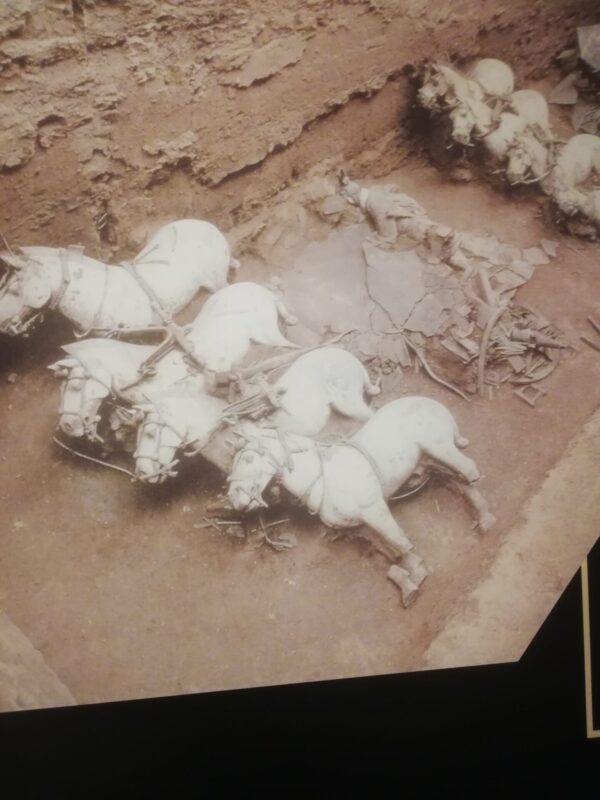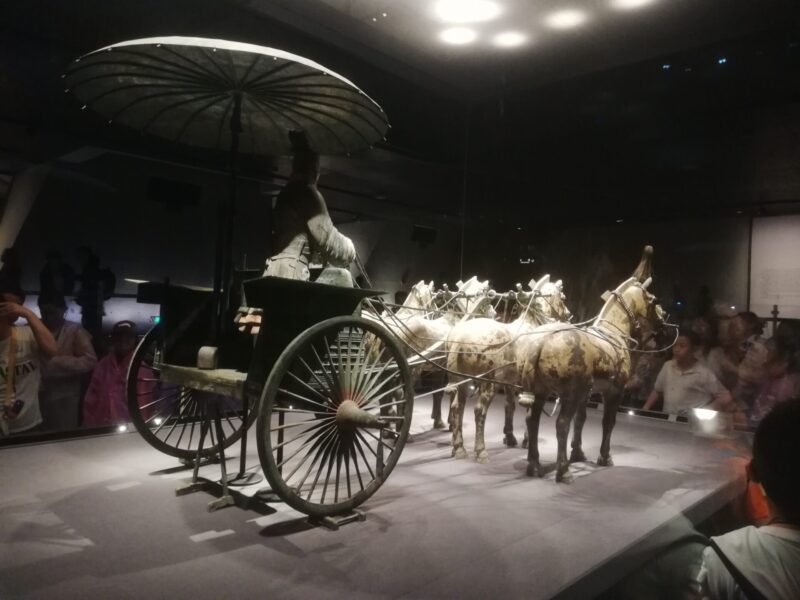When we arrived in Xi’an, we got a taxi and asked the driver to take us to a hotel. He took us to the Hilton, which is very expensive by Chinese standards but cheap by Western standards. We had to pay extra for breakfast but got a big discount if we became “Hilton Members”. Membership is free, but I suppose we will get loads of spam once we are able to receive e-mails again. The breakfast was excellent, and we didn’t have to sit next to the riff-raff eating peas with a spoon, dropping handfuls of mashed potato down their trousers and wiping their noses on their sleeves.
In the morning we went to see the Terracotta Warriors, about 30 kms east of Xi’an. In 2018 we got a minibus to the Anyuan Gate in the north of the city and a service bus to the complex where the warriors were found. This time we got a taxi for the day. He took us there, waited for us until a guide had taken us round, and then took us to a new complex adjacent to the mausoleum where Qinshihuang, the emperor responsible for creating the warriors, lies on an island in a sea of mercury to protect him from grave robbers. It hasn’t been excavated yet. The new complex was created to try and relieve the visitor pressure on the main complex, and the most popular exhibit, the two horse-drawn chariots, are located there. There are a number of sites in the complex, and we also visited tomb K-9901 where terracotta figures of civilian figures who served the emperor were found. A shuttle bus took us round the sites.
Qinshihuang was the emperor of the Qin state, one of the seven states which fought each other during the Warring States period of 475 to 221 BC. He unified China by defeating the other six states with an army of which the terracotta warriors are an exact replica. Hence the army had a vanguard (known as the “indispensables”) of young men without armour who kept the enemy occupied with mass slaughter before the infantry, archers and cavalry destroyed them. Qinshihuang’s dynasty only lasted 15 years before he died of a heart attack at the age of 49 in 206 BC.
The warriors were discovered in 1974 by four farm workers from Yang village who were digging a well. Three have since died but Mr Yang Gaojian, who was 18 at the time, is still alive and we met him and bought the glossy book which he has written. Jennifer then bought some jade ear-rings for her daughter and daughter-in-law
However an abiding memory of the terracotta warriors is the enormous crowd. Some 60,000 people a day visit the site for 365 days a year, and in entering Shed 1, you have to struggle to get through the surging mass of humanity to get to the front and be able to see the warriors. There is a lot of pushing and shoving but everyone is very good-natured. The crowd was twice as big as in 2018.
I’m having trouble uploading pictures
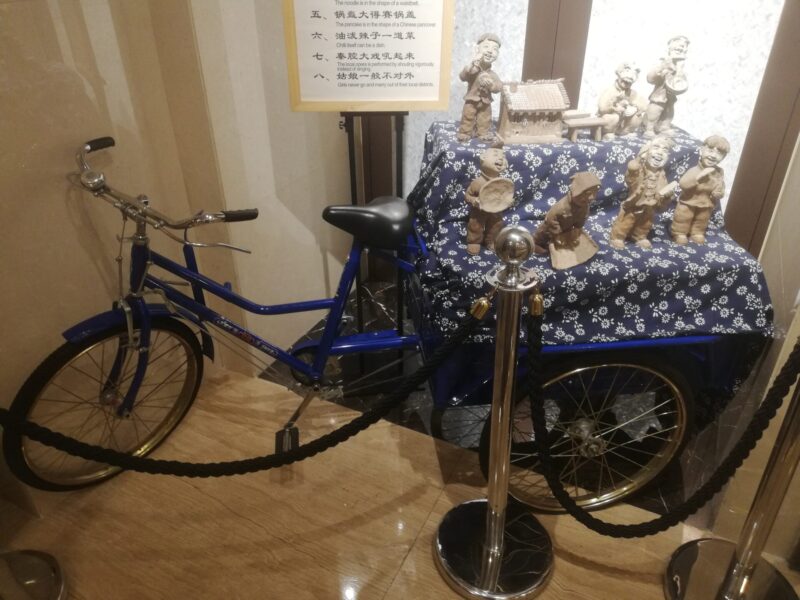
Hilton foyer

Hilton foyer

Emperor Qinshihuang
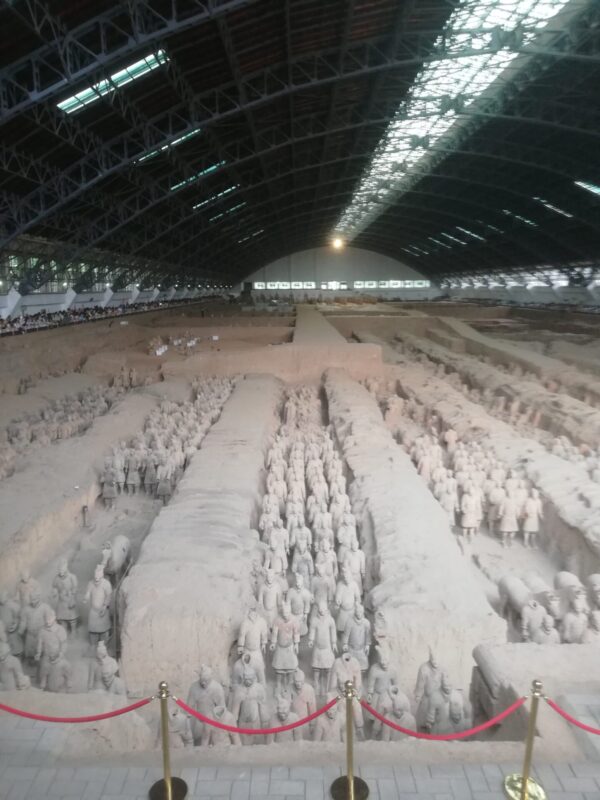
Warriors in Shed 1



Warriors being reconstructed. They were covered by a wooden roof when buried and eventually the roof collapsed breaking all the warriors except one

A policeman guarding the warriors from idiots jumping over the barrier


Archers having heads replaced


Horses

Buried warriors still being excavated
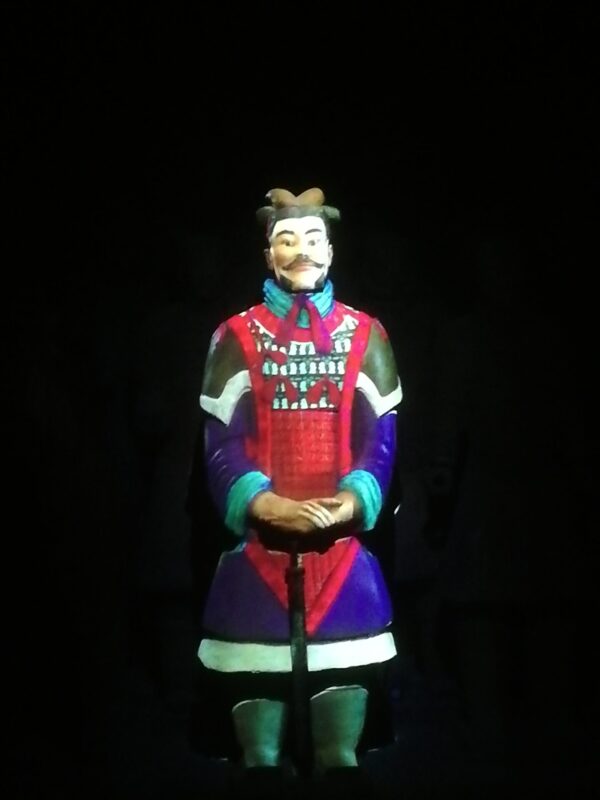
A General as depicted in the film

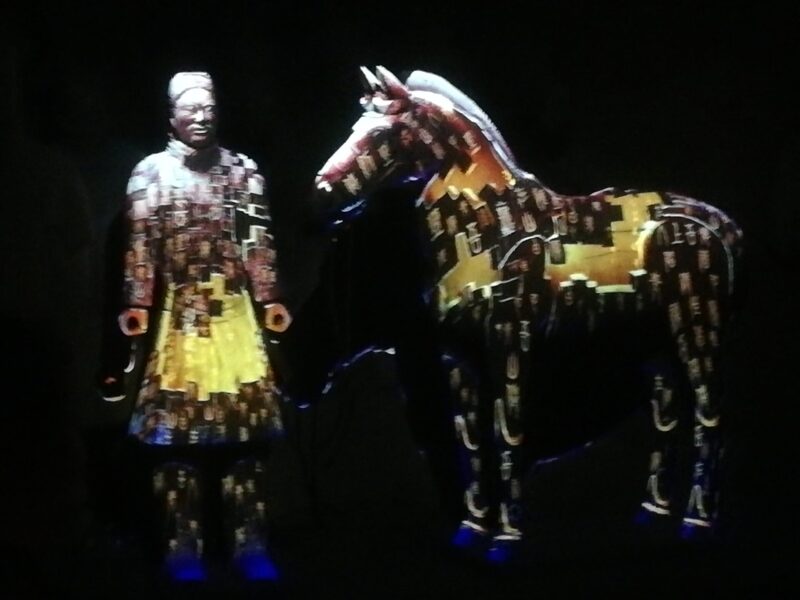









Mr Yang


Three terracotta warriors

Jade blocks

Our guide, Mr Wang

Figures from the emperor’s household in the tomb next to his mausoleum





